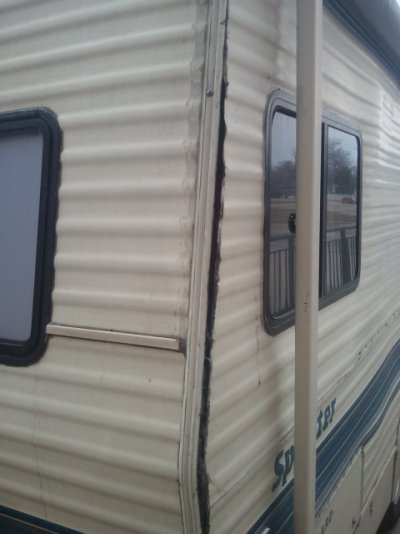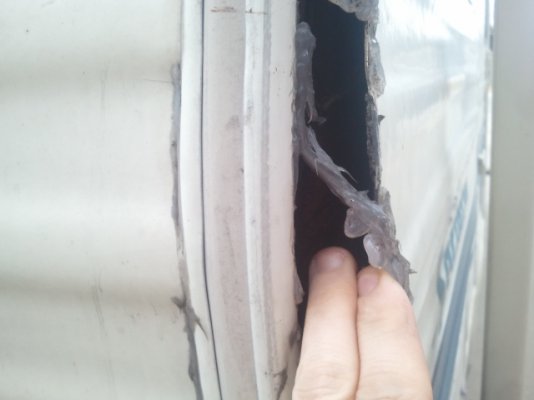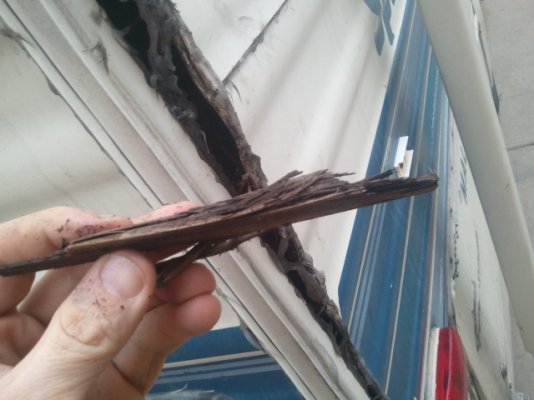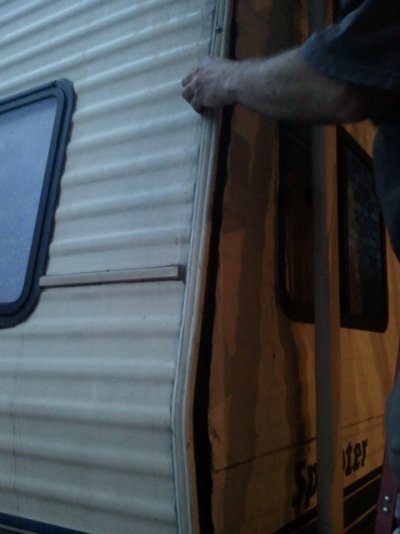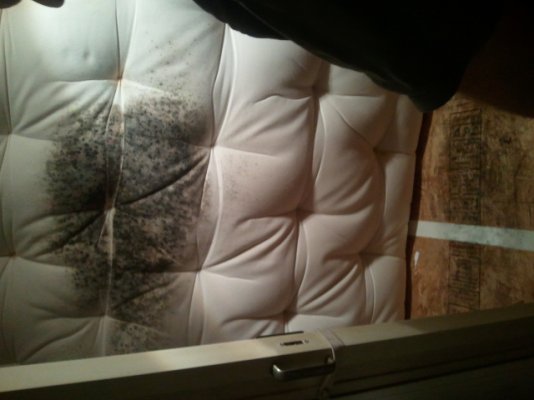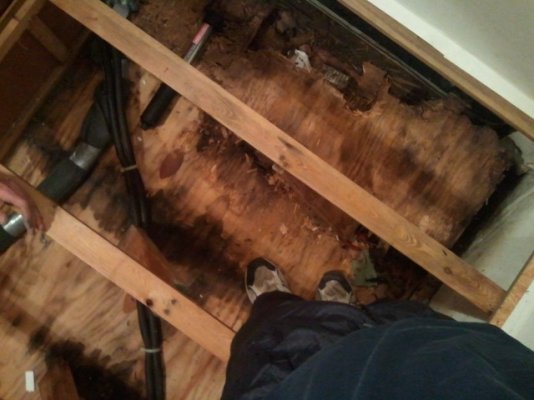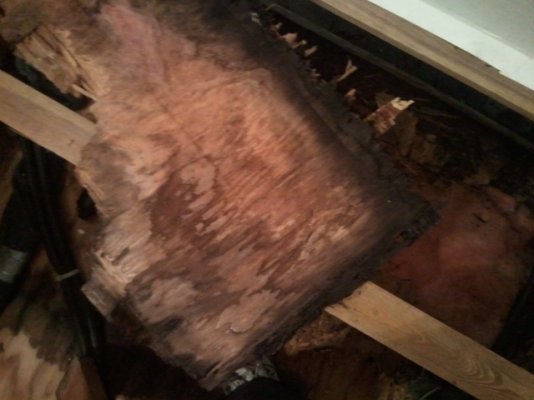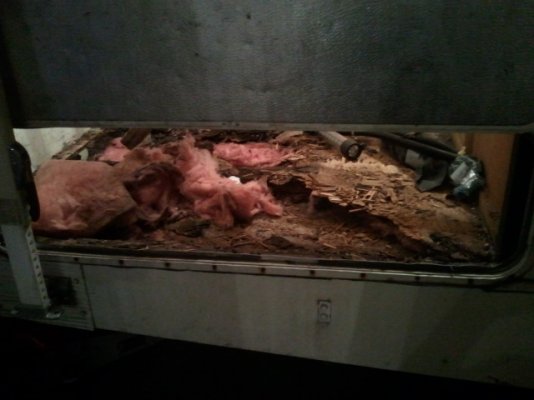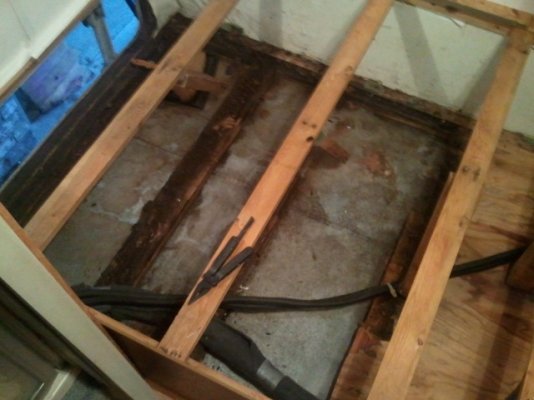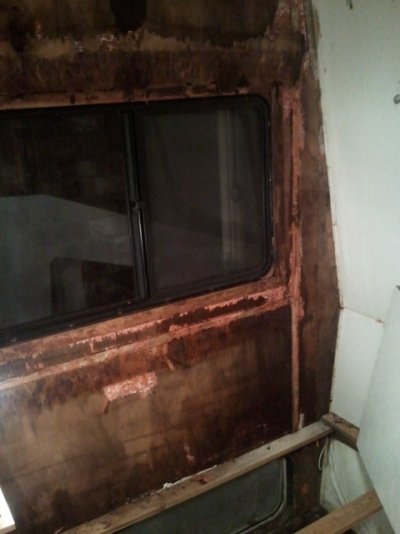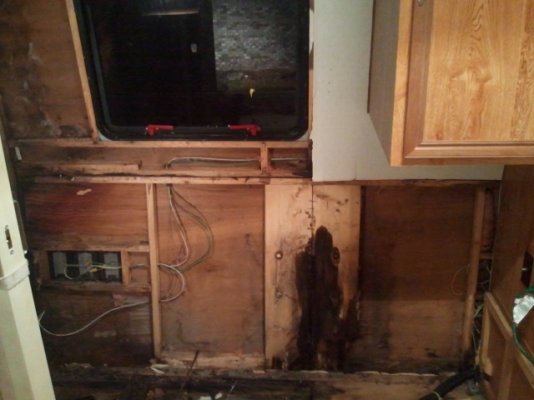DownbytheRiver
Well-known member
- Joined
- Jan 14, 2013
- Posts
- 54
I have been fulltiming for about 3 months in a 1991 Mallard Sprinter class C. I bought the RV for $6000 and saw that there was some wear and tear, but after our recent storm Sandy, I now think I have a bigger problem than previously anticipated.
The wall connection between my rear wall and passenger side wall are become separated. I tried to seal it with silicone and it seemed to hold fine, but the other day I noticed the crack increasing in size. After the most recent storm, it is considerably worse.
The wood within appears to be rotted to a fair extent. My research on delamination is that I won?t be able to repair this myself. The problem is I am recently divorced, homeless otherwise, and my budget it tight. I?m trying to finish my doctorate and travel for what freelance work I have. It keeps me moving and I need to keep moving.
I have some pics here. How bad is this? Can I do a patch job until I save more money? Is the vehicle structurally unsound at this point? Are my dreams of living fulltime crushed?
Any advice on how to survive this one would be greatly appreciated.
The wall connection between my rear wall and passenger side wall are become separated. I tried to seal it with silicone and it seemed to hold fine, but the other day I noticed the crack increasing in size. After the most recent storm, it is considerably worse.
The wood within appears to be rotted to a fair extent. My research on delamination is that I won?t be able to repair this myself. The problem is I am recently divorced, homeless otherwise, and my budget it tight. I?m trying to finish my doctorate and travel for what freelance work I have. It keeps me moving and I need to keep moving.
I have some pics here. How bad is this? Can I do a patch job until I save more money? Is the vehicle structurally unsound at this point? Are my dreams of living fulltime crushed?
Any advice on how to survive this one would be greatly appreciated.

